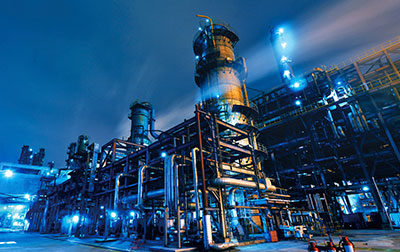Navigating the path to decarbonization: strategies for oil refineries

Moreover, within the refinery itself, the largest sources of CO2 emissions are scope 1 (direct) and 2 (indirect) from stationary combustion, accounting for up to two-thirds (60-70%) of total emissions. Substantial emissions also arise from Fluidized Catalytic Cracking (FCC) – 15-35% – and steam methane reformer (SMR) units – 10-30%.
Potential solutions
Effective carbon mitigation at a refinery can begin with efficiency improvements, reducing emissions by approximately 3-5% on average. For direct CO2 capture at the source, various options exist, including absorption-based technologies and other promising routes such as adsorption, membranes, and cryogenics. These options are at different stages of development, with some commercially available. Oxyfuel combustion and chemical looping are under demonstration. Pre-combustion carbon capture is the most cost-effective option, while post-combustion capture costs depend on CO2 concentration, making them relatively expensive. However, the carbon pricing markets and technologies are evolving rapidly, potentially lowering costs and enhancing economic viability of broader options in the future.
Additionally, transitioning to low- or zero-carbon alternatives such as renewable power generation, low(er) carbon hydrogen production, and process electrification can significantly reduce CO2 emissions. This approach has the added benefit of eliminating the need for CO2 disposal. The industry is witnessing substantial momentum in these areas, with technological advancements and an anticipated reduction in the cost of renewable electricity. Methane pyrolysis, which generates CO2-free hydrogen, is also being demonstrated and is gaining momentum, and electric reforming pathways are being investigated.
Furthermore, feed and product diversification can provide substantial scope 3 emissions reductions. This includes using biogenic or waste-sourced feedstocks for co-processing, dedicated biofuels production, and/or petrochemicals production.
The role of financial incentives
While the technology landscape is continually evolving to address current challenges, financial incentives play a pivotal role in promoting the viability of broader decarbonization initiatives. A multi-pronged approach, combining cost-effective solutions with punitive and incentivizing carbon mitigation mandates, is necessary to enable meaningful action in the short to medium term.
Hatch’s approach to decarbonization planning combines the vast engineering and business knowledge of our diverse teams applied to one of the world’s toughest challenges. Our approach begins with an evaluation and examination of a facility’s GHG emissions to understand the main drivers and to support opportunity identification and evaluation. An emissions profile is forecast to 2050 with consideration of anticipated changes in equipment, processes, production, and new projects that could impact the business-as-usual baseline. To date, Hatch has developed actionable decarbonization roadmaps for over 200 industrial facilities including oil refineries, mineable oil sands, natural gas processors, and midstream operators.
Decarbonizing oil refineries is a complex task that requires careful consideration of various technological and operational aspects. However, with the right strategies, including carbon capture, alternative energy sources, and financial incentives, the transformation to a greener future is not only achievable but also advantageous for those who act early to reduce emissions and gain a competitive edge in a changing energy landscape.
Click here to request access to our full paper: Pathways for CO2 Emissions Reduction from Oil Refineries – Understanding Technology Options and Costs

Sandeep Verma
Director Downstream, Oil & Gas, Downstream, Oil & Gas
Sandeep is a professional process engineer with over 20 years of experience in design, commissioning/start-up, and operations support including optimizations and troubleshooting. His expertise includes oil refining, gas-to-liquids, gas processing, and petrochemical industries including utilities and offsites. Sandeep has also successfully led and managed multiple projects covering the full spectrum of engineering design from feasibility studies through to detailed engineering.